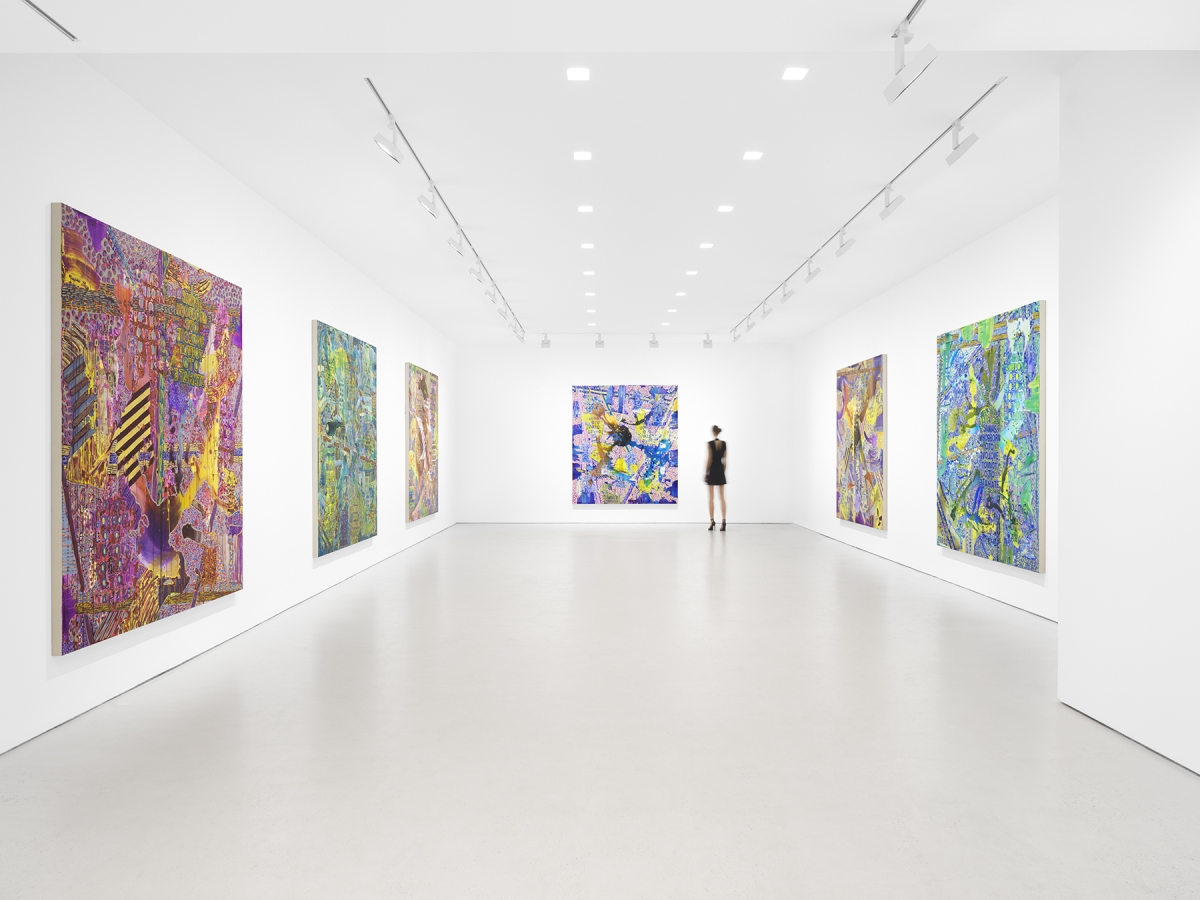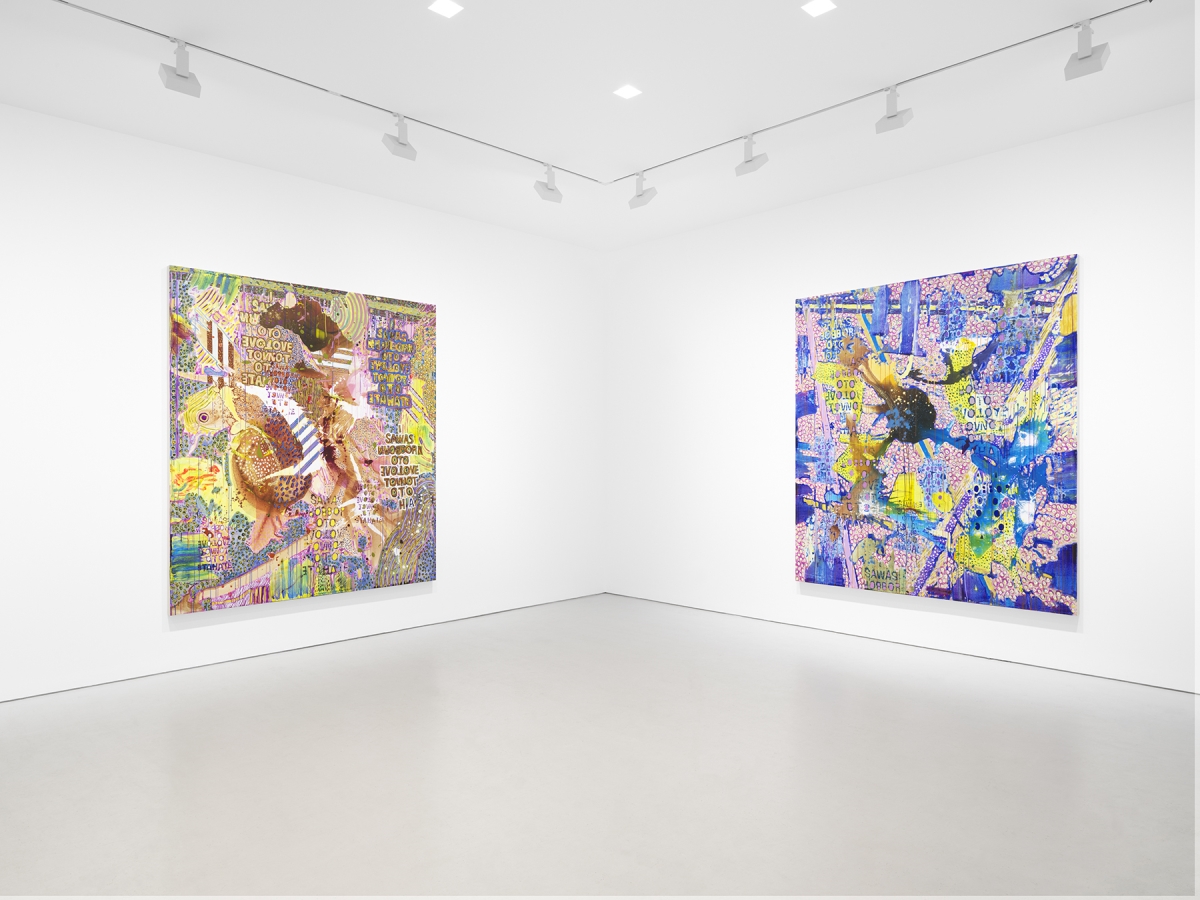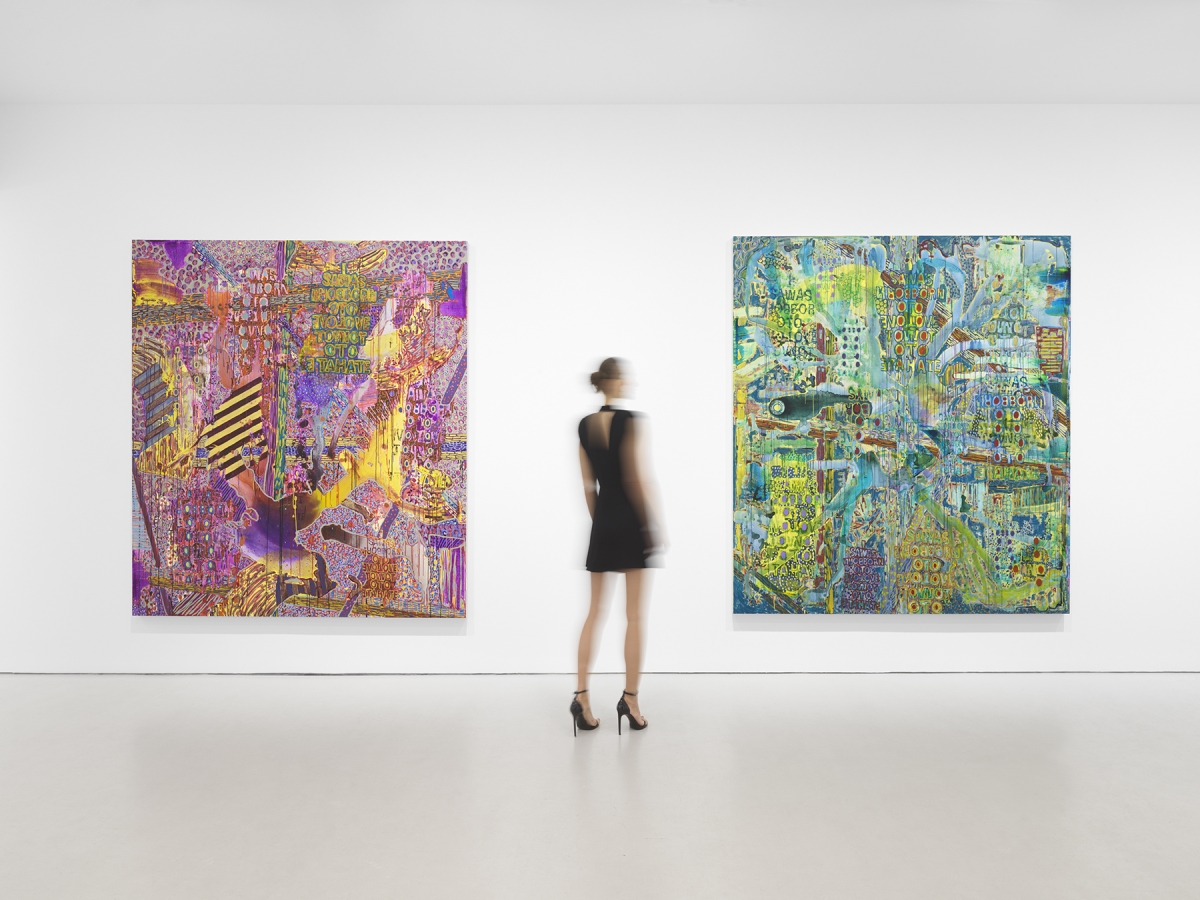
Artist’s Biography
Alexandra Grant (b. 1973 in Fairview Park, OH) received her Master of Fine Arts from the California College of Arts and Crafts and her Bachelor of Arts from Swarthmore College. Grant is the co-founder of X Artists’ Books and the founder of grantLOVE, an art project to raise awareness and money for various nonprofits through the gift and sale of her LOVE artwork. Her work has been the subject of solo exhibitions at Galería Marco Augusto Quiroa en Casa Santo Domingo, Antigua, Guatemala; Galerie Gradiva, Paris, France; Honor Fraser Gallery, Los Angeles, CA; Lowell Ryan Projects, Los Angeles, CA; Museum of Contemporary Art, Los Angeles, Los Angeles, CA; Night Gallery, Los Angeles, CA; Ochi Gallery, Sun Valley, ID; Orange County Museum of Art, Costa Mesa, CA; Positive Art Center, Seoul, South Korea; 18th Street Arts Center, Santa Monica, CA; the 20th Bienal de Arte Paiz, Guatemala City, Guatemala, and elsewhere. Grant has been included in group exhibitions at numerous international institutions including the Armory Center for the Arts, Pasadena, CA; Center for Contemporary Art, Tel Aviv, Israel; El Paso Museum of Art, El Paso, TX; Eli and Edythe Broad Art Museum, East Lansing, MI; Los Angeles County Museum of Art, Los Angeles, CA; Museo Archeologico di Amelia, Italy; Museum of Contemporary Art Denver, Denver, CO; Orange County Museum of Art, Newport Beach, CA; The Contemporary, Baltimore, MD; Torrance Art Museum, Torrance, CA; and the USC Fisher Museum, Los Angeles, CA. Her work may be found in the collections of Blanton Museum of Art, Austin, TX; Hammer Museum, Los Angeles, CA; Los Angeles County Museum of Art, Los Angeles, CA; Museo Santo Domingo, Antigua, Guatemala; Museum of Contemporary Art, Los Angeles, Los Angeles, CA; and the Orange County Museum of Art, Costa Mesa, CA. The artist lives and works in Los Angeles, CA.
Bio source: courtesy of Miles McEnery Gallery
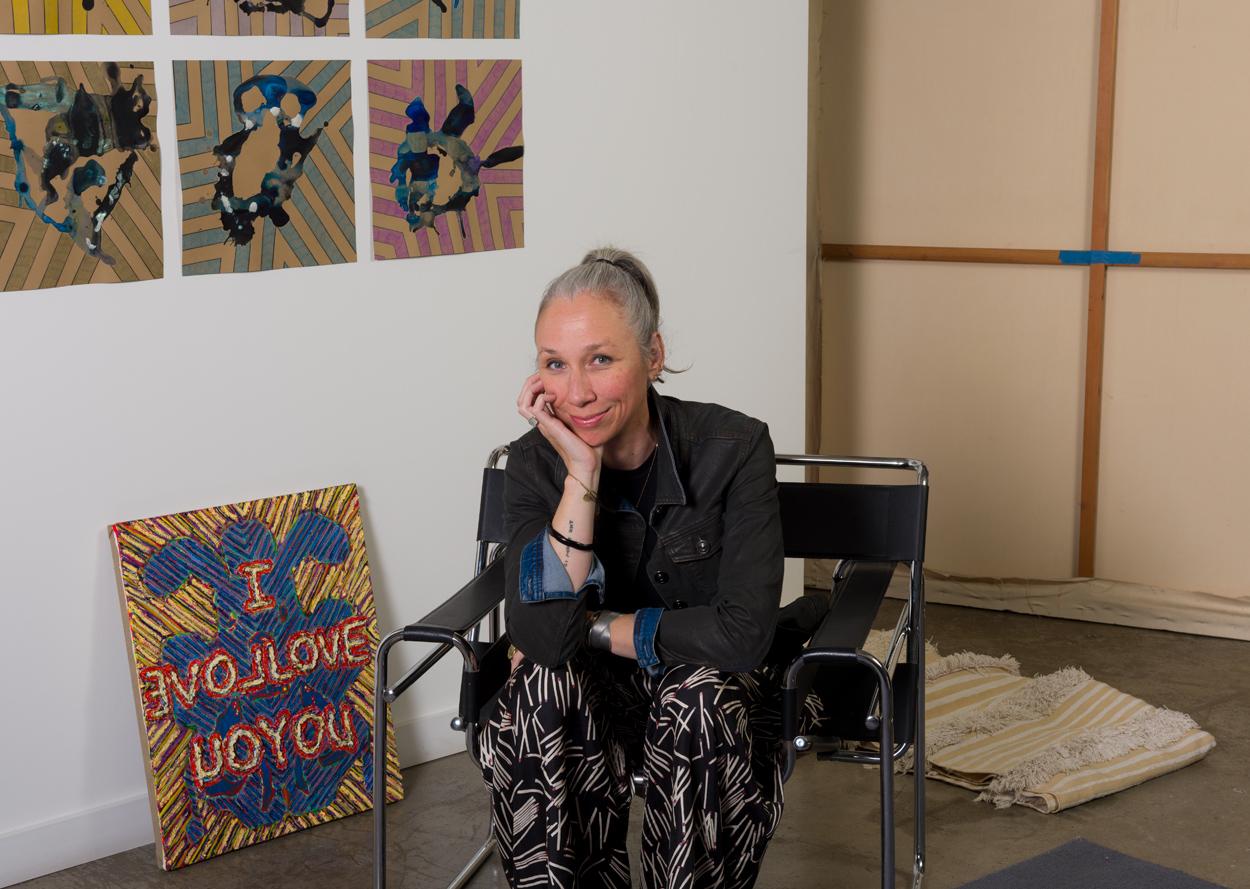
Interview Artist
Alexandra Grant
By Carol Real
How does literature serve as a catalyst for your artistic practice, and how does it influence your creative output? Can you share examples of specific literary works that have inspired your art?
When I was a graduate student studying drawing and painting at the California College of the Arts, the main question that preoccupied me was finding a stream of ideas that would both interest me in the long term and be the intellectual bedrock for my artistic career. I asked myself what I liked to do when no one was looking and what I liked to do when everyone was looking. What I enjoyed thinking about in my life to that point and what I would imagine enjoying for the rest of my life. The answer was literature and reading. So I began my career using painting to represent and interpret literature, poetry, and writers I admired. It’s what I still do today. My early text-based works examined poems by Pablo Neruda and Wislawa Symborszka. When I moved to Los Angeles in 2001, I searched out living writers interested in an exchange. That’s when my collaboration with hypertext pioneer Michael Joyce began. I have had the pleasure and privilege of engaging with a diverse group of writers and thinkers, from James Joyce to Hélène Cixous, from Szymborksa to living Polish writers such as Anna Adamowicz, Krystyna Dąbrowska, Julia Fiedorczuk, Bianka Rolando, Olga Tokarczuk, and Urszula Zajączkowska.
How do the languages we speak and the images we see influence our thoughts and shape our exchange of ideas? How does this understanding inform your artistic exploration of text and language?
I grew up traveling and living in many countries, speaking Spanish and English as a small child and learning French as a teenager. I have clear memories of landing in a place where I didn’t speak the language. I looked for visual and other clues to make sense of words and phrases as I adopted and adapted to French. So I’d say that my understanding of language comes from speaking three languages and being curious about the rhythms and intonations of other tongues that I don’t know.
Since my first solo show in Asia last year—MANTRA at the Positive Art Center in Seoul, Korea—I encountered curiosity about my work in a place where the alphabet itself is pictorial. I learned about artist Lee Ungno and how he approached abstraction from pictogram shapes present in Korean writing and representation. Inherent in my speaking English and two romance languages are the visual and philosophical limitations of the Roman alphabet.
When I was in conversation with Dr. Ryu Chul-Ha, the director of the Lee Ungno Museum last October, he said that the myth of Antigone didn’t exist in Korea because the Greeks hadn’t reached Korea. I hadn’t thought about that before but Alexander the Great never crossed the Himalayas! So Greek thought and therefore language, culture, images, and narrative were bound by geology and geography. Dr. Chul-Ha then told me about Sim Cheong, an ancient Korean myth, also about a little girl who sacrifices her life to save her blind father. There are many parallels to Antigone, including the fact that the myths of these two young women have lasted over millennia.
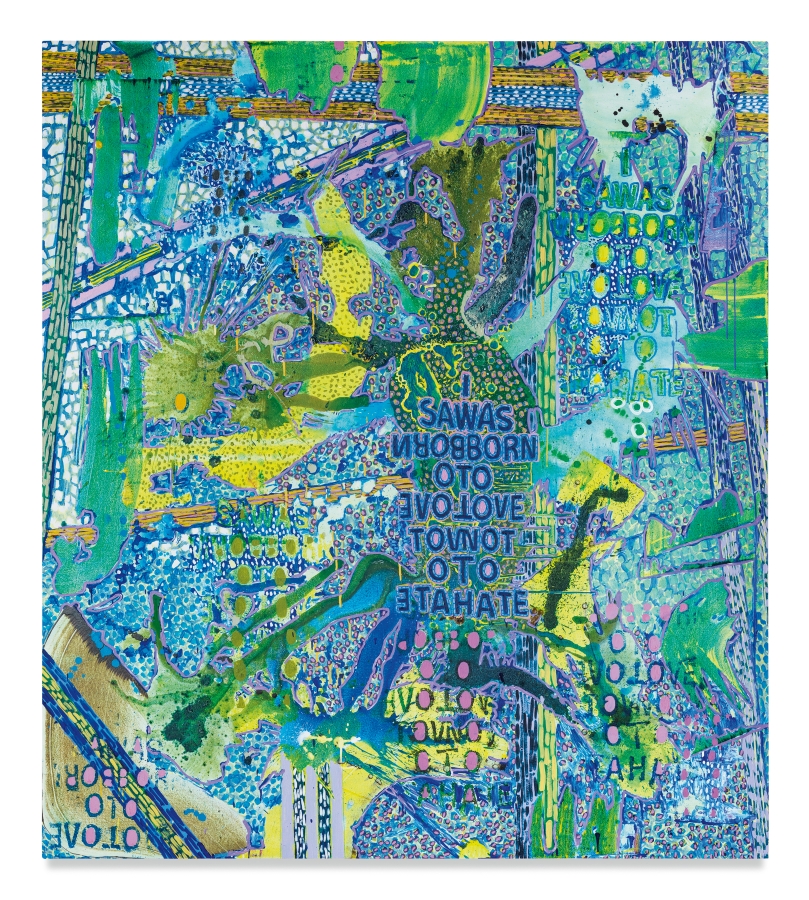
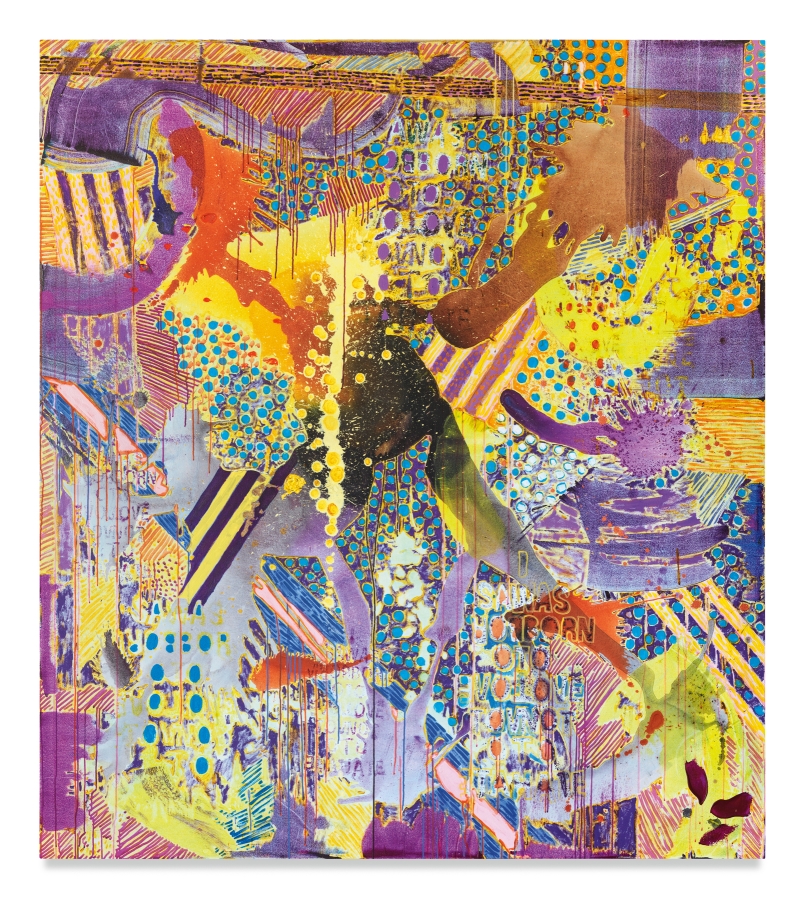
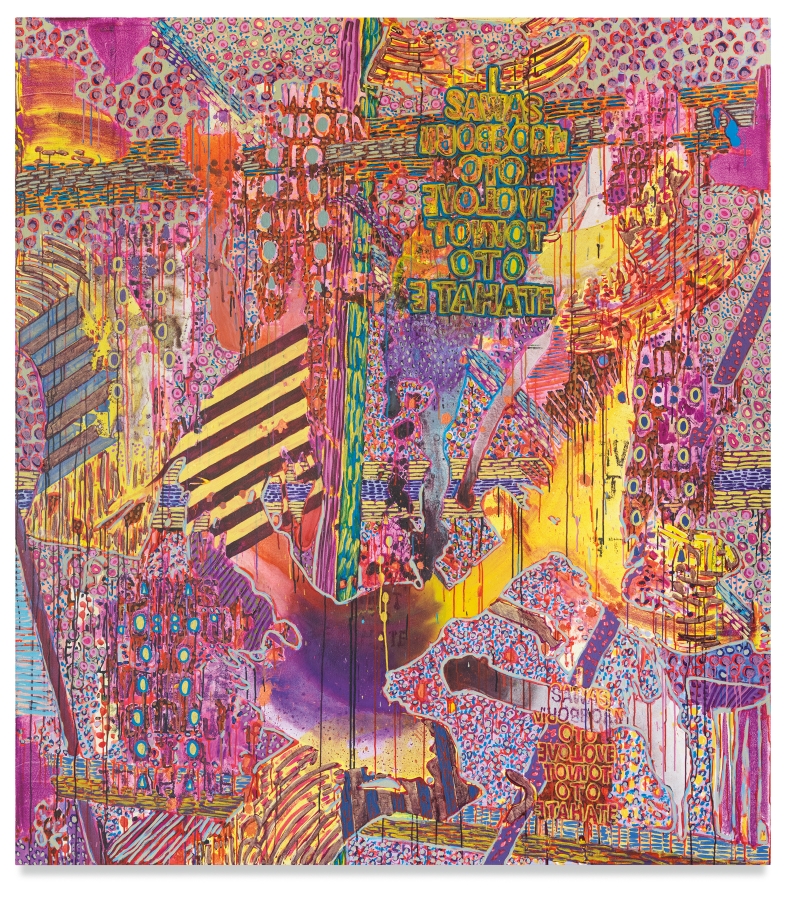
Can you explain the connection or evolution between your earlier “Antigone 3000” paintings and your more recent works? How has your artistic vision evolved over time, and what inspired these shifts?
I’ve been working with and depicting the story of Antigone in my paintings since 2014. The reason it has held my attention is that the work continues to evolve. Each composition is based on three main elements: horizontal pours of paint, which represent the organic or messy qualities of real living; ruled lines, which represent the rule of law or idealized life; and words, in particular, a phrase by Antigone from Sophocles: “I was born to love not to hate.”
Since beginning my career, I have shifted my focus and style both gradually and suddenly, and the former is the case for the “Antigone 3000” series. If I look at the earlier paintings in the “Antigone 3000” series, they are more architectural and formal, more rigid, even, in their construction and composition. The paintings most recently exhibited at Miles McEnery Gallery in New York still have the three elements—pours, lines, and text—but are much more free, joyous, and visually cacophonous, like a firework explosion. I think you can see that I’m enjoying painting them.
The Rorschach-like text in your artwork enhances its abstract nature. Can you elaborate on how this technique contributes to abstraction and deepens meaning in your work?
I began my career in drawing and painting with all the text elements in reverse or backwards. It created a Through the Looking Glass experience, of being on the other side of a world, looking in. It invited the viewer to stop reading the text and instead make sense of it through other visual cues, like color, scale, and the emotional intensity with which the words themselves were written.
In “bodies,” a series of paintings from 2010 based on texts by Michael Joyce, the words double, representing the symmetry of the human body. This idea of symmetry and repetition influenced my representation of Antigone’s voice. Represented symmetrically, “I was born to love not to hate” becomes a totem. The original image was created as a wax rubbing on paper over a plaster sculpture. The image was both a font from the sculpture but also showed that my hand was involved in the frottage. As the work evolved, I began to use a silk-screened version of the text-image, which allowed me to move onto canvas and use different colors in the printing process.
At an opening in 2019, my godson, who was 10 at the time, came running across the gallery and said, with obvious delight, “I decoded the painting!” I like that the viewer has to puzzle out and decode the text when it is, as you have said, abstracted into a form.
In addition, my earlier work, which focused on painting the words themselves, emphasized a text-based approach. I wanted to be considered an abstract painter using text. So perhaps this desire to tell the story through the painting itself, rather than just the words, is another driving force behind their creation.
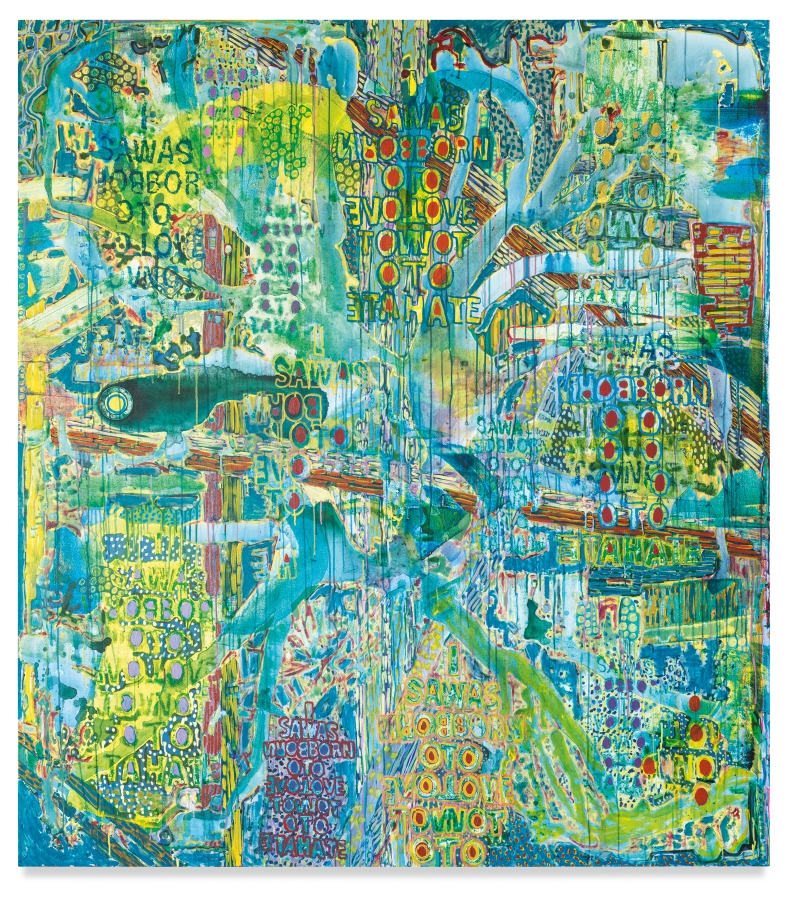
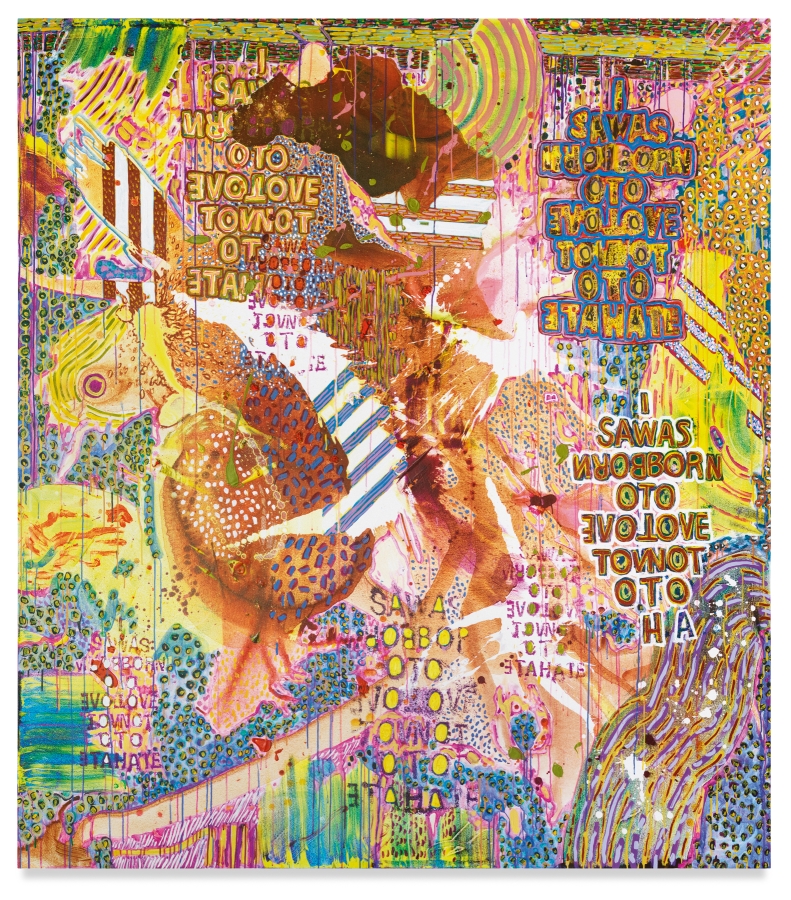
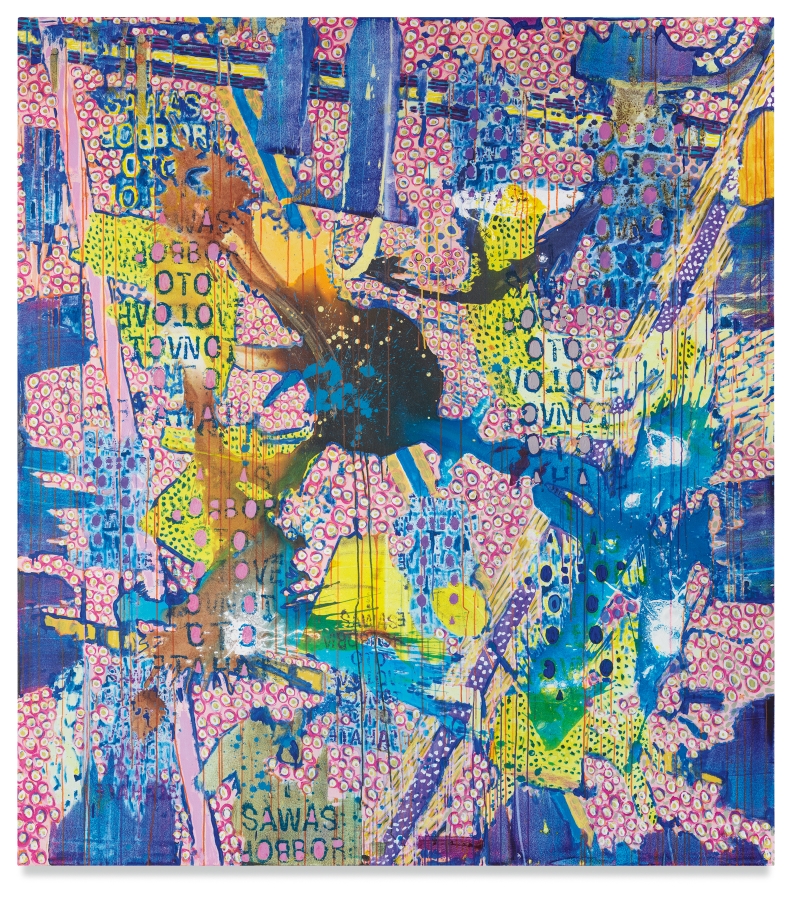
How does the scale and size of your paintings impact viewers’ experience and interaction with the artwork? In what ways does it affect the emotional or sensory impact?
There’s a performative aspect to all paintings—though the studio space is private, the paintings are a record or traces of a series of physical actions. Scale allows me is to stretch my arms and spine and get on my tippy-toes and sometimes even a ladder, and to draw and paint to the edges of my physical limitations. I also walk back and forth to look at the painting. I get up close and granular with a small brush and then move several paces back to see the overall effect. I think the viewer intuits that the artist is moving backward, forward, up and down… as I solve what is, in the end a visual puzzle. And the bigger it is, like any real puzzle, the more pieces there are to unite.
Small paintings, however, can be difficult to resolve and I admire painters who work on a smaller scale.
Can you share any upcoming projects or exhibitions you’re excited about? What can viewers and art enthusiasts anticipate from your future creative endeavors?
I’m looking forward to several months of quiet studio time. I just completed a painting in Berlin in unusual circumstances. There was a flood in the studio and so I painted in a corner of my kitchen instead, with extreme lighting that ranged from direct sunlight to near-darkness. The lighting and the fact that I was only working on one painting—I usually work in a larger space with many paintings underway at the same time—led to a new evolution in the “Antigone 3000” works: a strong palette of contrasting colors, both light and dark. I’m excited to see where these new, accidental ideas take me. As is often the case, an accident is an invitation to innovate.
I’m continuing to develop six large-scale paintings for a project with six Polish poets—a chapel-like installation of women’s voices.
I’m working on an upcoming project with the French writer and theorist Hélène Cixous, Itinéraires Fantômes (Phantom Itineraries) which will be part of an exhibition at the CAPC in Bordeaux next year curated by Marion Vasseur and Ana Iwataki.
My work with Wislawa Szymborska and Michael Joyce will be the subject of my first solo exhibition at the Museum of Literature in Warsaw, Poland, organized by curator Anna Lipa in the end of 2024.

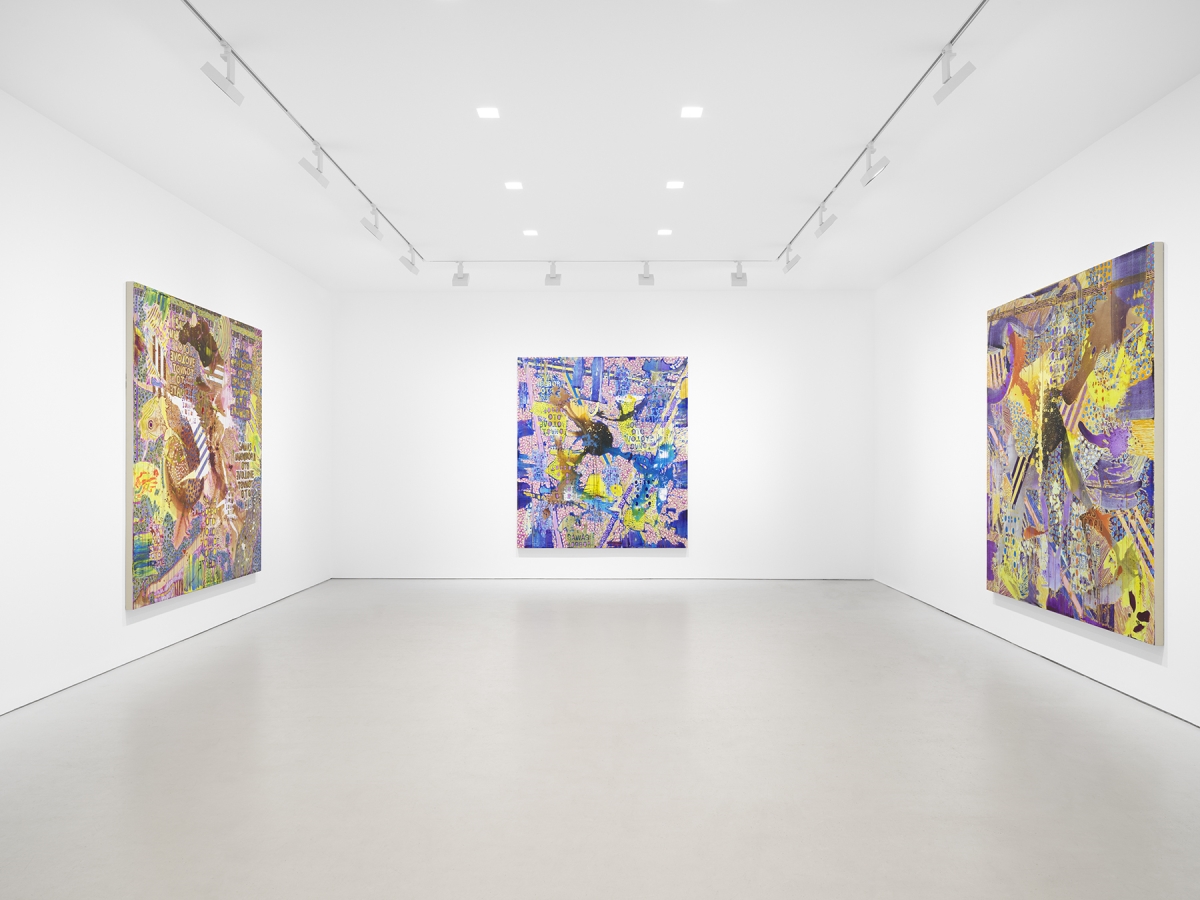
How do you maintain a balance between staying true to your personal artistic vision and navigating external influences or expectations? How do you ensure your art remains authentic and reflective of your creative intentions?
As I respond to your questions, I’ve used the words joy, joyous, and enjoy. I think those are key to balance in any creative endeavor. I enjoy my work very deeply. I trust my instincts about my next step and have sought to work with curious, rigorous, and kind people. When asked recently what the best preparation is for an artistic career, I answered that playing sports as a young person gave me the tools to understand the importance of daily discipline and how to work with others. I learned to both be present in today’s work and to recognize that art, like sport, is a continual activity, not just a single piece or game. In addition, being an artist requires multiple skills. In the same way, a baseball player on offense both hits the ball and runs the bases and then switches to a defensive skill set with a glove, artists must master several different skills. For my work, they are reading and researching, thinking and writing, and then the production of works in collaboration with others. And then there’s the bigger picture: my interest in both the history of global art and literature keeps my mind curious, and engaged and gives me a sense of being part of something bigger than myself.
What advice would you give emerging artists who explore text, language, and art? How can they navigate and leverage these elements to create meaningful and impactful artworks?
Making text-based art is difficult! From graffiti tagging to conceptual practices and more painterly approaches like my own, it takes practice. The first piece of advice I would give is not to give up…and try different approaches. Also, the questions I asked myself as a student was useful. Ask yourself what do you care about when everyone is looking, and what do you care about when no one is looking? Hopefully, in your art, it will be the same thing.
* All images courtesy the artist and Miles McEnery Gallery.
Editor: Kristen Evangelista
